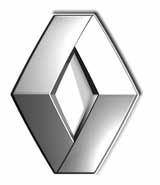

The traced figure will be that of the whole amended circle. Then flip the paper over the fold line and trace around it again.

Similarly, the amended (cut) circle can be refolded in half and traced around. Holding a mirror along the fold line enables students to see an image of the whole shape even when one half is masked. Each alternative term can be demonstrated. It is important for students to see that one half of the shape maps onto the other half by folding and flipping actions. Ask: Why is reflective symmetry sometimes called mirror symmetry, fold symmetry, and flip symmetry?.Mirror symmetry and fold symmetry have the same meaning with 2-dimensional shapes. You may want to show how the whole shape is visible if the mirror is located along the fold line. How did the way we made the shape affect the symmetry it has? The shape has reflective or line symmetry along the fold line. Open the cut circle to confirm the students’ predictions. Write down any mathematical vocabulary that might arise, in particular, terms like symmetry, or reflection. Ask the students to anticipate the pattern that the opened-up shape might have. Fold a circle in half and cut pieces out of it in any way you like.Te reo Māori vocabulary terms such as hangarite (symmetry, symmetrical), hangarite hurihanga (rotational symmetry), whakaata (reflect, reflection), huri (rotate, rotation), and neke (translate, translation) could be introduced in this unit and used throughout other mathematical learning. Search for symmetry to show how common geometric patterns are throughout the world. Encourage students to capture symmetric patterns they see and use the internet as a tool for finding images in Aotearoa. Look for examples of symmetrical design in the local community. Kowhaiwhai patterns on the rafters of wharenui (meeting houses), designs on Rarotongan tivaevae, Fijian tapa or Samoan siapo cloth usually involve symmetries. Symmetry is common across all cultures of the world.

Capitalise on the interests of your students. The contexts for this unit can be adapted to suit the interests, experiences, and cultural backgrounds of your students.

#Logo with a reflection symmetry full
Since the logo maps onto itself three times in a full turn of 360⁰, the figure has rotational symmetry of order three. Each turn of 120⁰ (one third of one full rotation) maps the logo onto itself. This logo also has rotational symmetry about a point. T here are three lines where a mirror could be placed and the whole figure could be seen, with the image in the mirror forming the hidden half. A shape has symmetry if it has spatial pattern, meaning it maps onto itself either by reflection about a line, or rotation about a point.Ĭonsider the Mitsubishi logo. This unit centres on symmetry, particularly reflective and rotational symmetry, although there is some reference to translation symmetry.


 0 kommentar(er)
0 kommentar(er)
